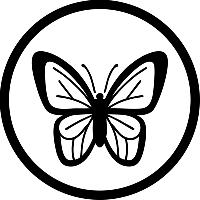Hydrangea, Smooth 'Invincibelle Wee White®'




Out of stock
Coming soon, still growing- Sun Preference
- Full-Sun, Part-Sun
- Bloom Time
- June, July, August, September, October
Description
A dwarf cultivar producing pure white flowers on a tidy, rounded mound. The dark green leaves continuously produce strong stemmed flowers throughout the summer.
Minnesota's Largest Selection of Shrubs
Elevate your landscaping with Gertens' unmatched variety of shrubs! Selecting the right shrubs for your backyard can enhance its beauty and functionality. Consider factors like sunlight, soil type, and mature size when choosing shrubs. For sunny areas, flowering shrubs like roses or hydrangeas can add color and charm. In shady spots, opt for shrubs like azaleas or hostas. Evergreen shrubs provide year-round interest and privacy, while deciduous shrubs offer seasonal color changes. At Gertens, we offer a wide selection of shrubs to suit every backyard need.
Details
Invincibelle Wee White™ Hydrangea | Hydrangea arborescens 'NCHA5'
Height: 30 inches
Spread: 30 inches
Sunlight: full sun to partial shade
Hardiness Zone: 3a
Group/Class: Invincibelle Series
Brand: Proven Winners
Description:
This dwarf, rounded selection features enormous white flower heads in summer, held upright on strong stems and lasting for a long time. blooms on new growth; great as an accent or border plant; reblooming. Pruning to the ground each year is not needed
Ornamental Features
Invincibelle Wee White™ Hydrangea features bold balls of white flowers at the ends of the branches from early summer to mid fall. The flowers are excellent for cutting. It has forest green deciduous foliage. The heart-shaped leaves do not develop any appreciable fall color.
Landscape Attributes
Invincibelle Wee White™ Hydrangea is a multi-stemmed deciduous shrub with a more or less rounded form. Its strikingly bold and coarse texture can be very effective in a balanced landscape composition.
This shrub will require occasional maintenance and upkeep, and is best pruned in late winter once the threat of extreme cold has passed. It has no significant negative characteristics.
Invincibelle Wee White™ Hydrangea is recommended for the following landscape applications;
- Accent
- Mass Planting
- Border Edging
- General Garden Use
- Container Planting
Planting & Growing
Invincibelle Wee White™ Hydrangea will grow to be about 30 inches tall at maturity, with a spread of 30 inches. It tends to be a little leggy, with a typical clearance of 1 foot from the ground. It grows at a fast rate, and under ideal conditions can be expected to live for approximately 20 years.
This shrub does best in full sun to partial shade. It prefers to grow in average to moist conditions, and shouldn't be allowed to dry out. It is not particular as to soil type or pH. It is highly tolerant of urban pollution and will even thrive in inner city environments. Consider applying a thick mulch around the root zone in winter to protect it in exposed locations or colder microclimates. This is a selection of a native North American species.
Invincibelle Wee White™ Hydrangea makes a fine choice for the outdoor landscape, but it is also well-suited for use in outdoor pots and containers. It can be used either as 'filler' or as a 'thriller' in the 'spiller-thriller-filler' container combination, depending on the height and form of the other plants used in the container planting. It is even sizeable enough that it can be grown alone in a suitable container. Note that when grown in a container, it may not perform exactly as indicated on the tag - this is to be expected. Also note that when growing plants in outdoor containers and baskets, they may require more frequent waterings than they would in the yard or garden. Be aware that in our climate, most plants cannot be expected to survive the winter if left in containers outdoors, and this plant is no exception. Contact our experts for more information on how to protect it over the winter months.
More Information
| Gerten Grown Plants | Gerten Grown Plants |
|---|---|
| Available for Pre-Order | No |
| Bloom Time | June, July, August, September, October |
| Sun Preference | Full-Sun, Part-Sun |
| Mature Height (Range) | 2 - 5 feet |
| USDA Hardiness Zone | 3, 4, 5, 6, 7, 8, 9 |
| Common Family Name | Hydrangea |


